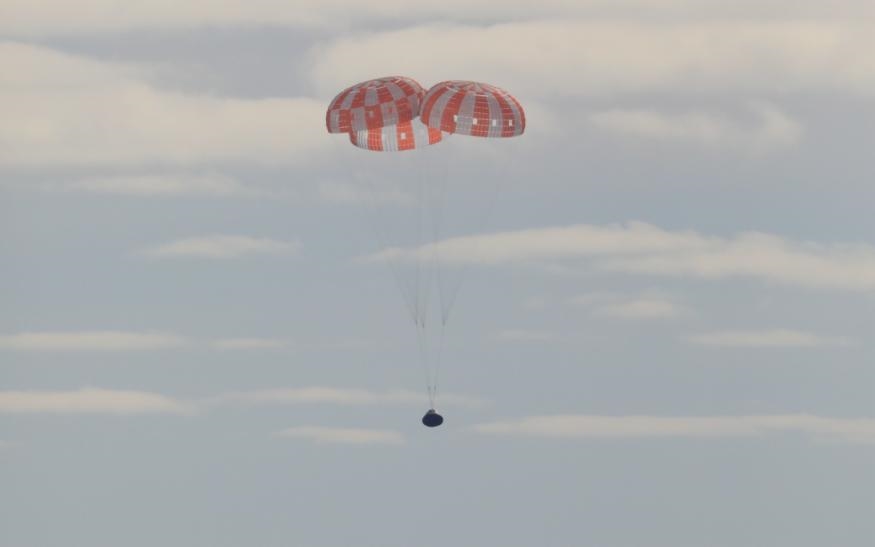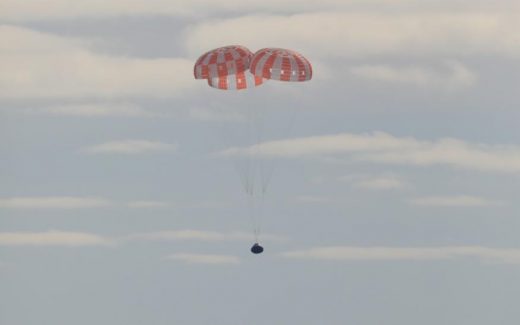NASA’s Artemis 1 Orion spacecraft returns to Kennedy Space Center
NASA’s Artemis 1 moon mission has returned to Earth
NASA’s Artemis 1 mission has returned to Earth following a successful trip around the moon. On Saturday, at approximately 12:40PM ET, the uncrewed Orion vessel landed off the coast of Baja, California, completing a nearly 26-day journey that saw the spacecraft break an Apollo flight record and send back stunning photos of Earth’s natural satellite.
On its way to the Pacific Ocean, Orion performed what’s known as a skip entry. After entering the Earth’s upper atmosphere, the crew vessel briefly used its own lift to “skip” back out before re-entering for the final descent. In doing so, it became the first spacecraft designed to carry humans to carry out such a maneuver.
Splashdown.
After traveling 1.4 million miles through space, orbiting the Moon, and collecting data that will prepare us to send astronauts on future #Artemis missions, the @NASA_Orion spacecraft is home. pic.twitter.com/ORxCtGa9v7
— NASA (@NASA) December 11, 2022
“This is an extraordinary day,” Administrator Bill Nelson said during the NASA livestream. “… It’s one that marks new technology, a whole new breed of astronaut, a vision for the future that captures the DNA of particularly Americans — although we do this as an international venture — and that DNA is we are adventures, we are explorers, we always have a frontier, and that frontier is to now continue exploring the heavens.”

Now that Orion has safely returned to Earth, NASA will begin assessing all the data that the spacecraft collected on its 1.4 million-mile journey through space and begin preparing for Artemis II. That mission, currently scheduled for 2024, will see human astronauts fly aboard the Orion spacecraft. Then, as early as 2025 or 2026, NASA hopes to carry out its first lunar landing since the end of the Apollo program in 1972. It could take the US Navy up to five hours to recover the Orion spacecraft, though a preliminary inspection from a helicopter indicated the capsule was undamaged.
Getting here wasn’t easy. NASA’s next-generation Space Launch System gave the agency plenty of headaches before it successfully carried Artemis 1 to space on November 16th. NASA spent much of the summer troubleshooting fuel leaks and engine problems. Come fall, Hurricane Ian and later tropical storm Nicole further delayed the launch of Artemis 1, but after all of that was said and done, the SLS produced one of the most memorable rocket launches in decades. A nighttime flight saw the rocket lit up the Kennedy Space Center.
Flight Day 26. Orion is returning to Earth. 20,000 miles / 32,000 km from Earth. Traveling at 9,600 mph / 15,500 kmh and accelerating. pic.twitter.com/EWCKXkChjg
— Orion Spacecraft (@NASA_Orion) December 11, 2022
More broadly, the conclusion of Artemis 1 caps off one of NASA’s most successful years in recent memory. Among other achievements, 2022 saw the James Webb Space Telescope begin operation and start producing stunning images of the cosmos, and the DART spacecraft successfully alter the orbit of an asteroid. Now the agency turns its attention to the moon and beyond.
(18)



